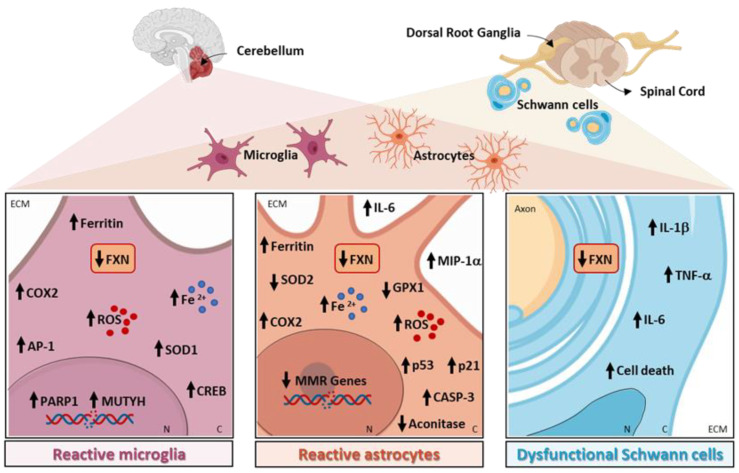Figure 1.
Neuroinflammation-related pathways altered in Friedreich’s ataxia (FRDA). Cerebellum, spinal cord, and dorsal root ganglia are three of the principal nervous system organs involved in the pathogenesis of FRDA. The genetically decreased expression of frataxin (FXN) leads to the disturbance of the metabolism of iron with the consequent iron increase in reactive microglia and astrocytes, together with mitochondria dysfunctions. FRDA microglia show an increase in oxidative damage, and the DNA repair proteins MUTYH and PARP-1, reactive oxygen species (ROS), activator protein 1 (AP1), and cAMP response element-binding protein (CREB), known to drive cyclooxygenase 2 (COX2) expression. In FRDA astrocytes, the depletion of FXN leads to an increase in ROS, COX2, MIP-1α, IL-6, p53, p21, and activated caspase-3 (CASP3), and to a decrease in mitochondrial aconitase, Pgc-1α, Sod2, and glutathione peroxidase 1 (GPX1) with a significant reduction in the expression of several MMR genes. Finally, FXN deficiency causes an increase in IL-6, IL-1b, and TNF-a in dysfunctional Schwann cells. N, nucleus; C, cytosol; ECM, extracellular matrix.

